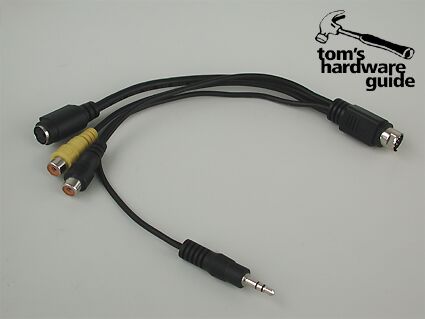ATI All In Wonder RADEON 7500
Connectivity
All connectors are mounted on the slot bracket of the card. The NTSC antenna connector accepts anything, from standard aerial input to cable or satellite-receiver signals. Since the card lacks an audio processor of its own, the stereo signal is passed on through to the sound card's line-in, either externally or via an internal cable (which ATi does not include). The third possibility is to output the signal digitally to a Dolby Digital decoder, using the S/PDIF. The Video-Out leaves nothing to be desired either, including S-VHS and composite output. The connectors for the video and audio output can be found on a separate break-out box, which comes with adhesive pads and can be stuck to a surface such as the desk, for example. The cable length of 1.50 meters should be sufficient. ATi also thought to include two short cables, one each for S-VHS and composite video.
Although, theoretically, all RADEON cards support dual display modes in hardware, AIW cards are limited to the use of only a single monitor at a time. This can be either a digital monitor connected by DVI or a conventional analog CRT (using an adapter). So, in this case, the dual display feature is limited to the TV-Output (e.g. monitor + TV-Out).
Get Tom's Hardware's best news and in-depth reviews, straight to your inbox.

